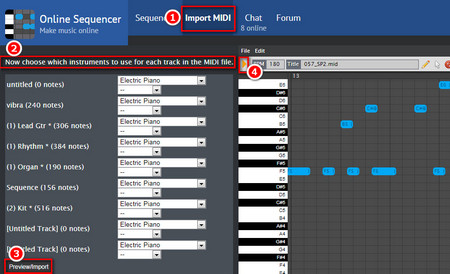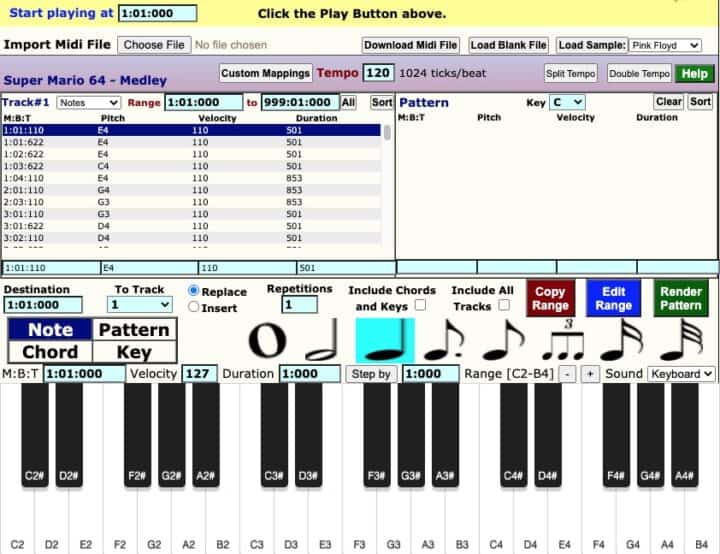

- #Midi play how to
- #Midi play mp4
- #Midi play install
- #Midi play full
#Midi play install
Install the timidity and timidity-interfaces-extra packages, and run the program with the interface of your choice:

MIDI file MIME types are audio/x-midi, audio/x-mid, and audio/midi.
#Midi play full
drums, bass, keyboard and voice) you can’t separate the tracks.For a full list of MIDI software, see the Multimedia page.
If the audio file you’re listening to includes more than one instrument (i.e. AIFF file (large in size, good quality) or a. More difficult to fix or edit – if you make mistakes, re-record. Sounds real – includes breaths, sound of fingers on a fretboard, has a humanistic quality, not perfect. An audio file is a recording of a real instrument or voice. #Midi play mp4
Common compressed audio file formats include MP3, MP4 & AAC. Common uncompressed audio file types include WAV or AIFF. It’s difficult to edit an audio track without risking the loss of quality. The track contains the analog sound which has been converted to a digital signal. An audio track is created by recording an acoustic or electronic instrument via a microphone. It’s easy to create “impossible to play” parts like a drum part that can only be played by a person with 4 arms and legs!. MIDI relies on the quality of sounds in your software program. You don’t need a quiet environment to create a MIDI track – you can record anywhere, anytime. You can easily separate individual parts. You can transpose or alter the tempo without losing quality. You can record instruments that you don’t own. You can switch playback sound instantly. You can easily change individual notes: pitch, duration, velocity. Can use them as a shortcut to entering notes into your software. Quality of ones you find online are varied – inaccuracies, mechanical. Saves you having to record all the parts separately. You can edit the notes in a MIDI file (make a note longer or shorter, transpose it, delete it). If you want to remove the keyboard part, select it and delete it. If you don’t like the note length in the bass guitar part, just edit it. The best thing about MIDI files? You can edit the information!. A MIDI file played by GarageBand might sound a little different when played by Soundtrap because each of those programs has its own unique set of instrument sounds. A MIDI file works the same way – you import it into a software program such as GarageBand, Soundtrap, Mixcraft, Logic, ProTools, Ableton, Sibelius or Finale (the “pianola” equivalent) and it contains information about which instruments will be played, which notes they will play, how long, how loud and so on. You can take the pianola roll and place it inside another pianola – the note length and dynamic will be the same, but the overall tone or timbre will be different because it’s being played by a different pianola. The information on the pianola roll tells the pianola which notes to play, how long or short each one is and how loud or soft they are. A pianola roll controls the pianola and tells it what to play. A pianola roll does not make any sound itself. MIDI file is the digital version of a pianola roll. 
The file can sound different when opened in different software apps because each app has its own unique set of instruments.The software uses its own sounds to play back the file.When you open this file with a music software program, the software knows what to play.
#Midi play how to
Music file that contains information about notes: which pitch, when to play them, how to play them, velocity, length.It simply tells the software what to play and how to play it, the same way a pianola roll tells a pianola which notes to play and how to play them It’s easy to edit notes on a MIDI track.MIDI stands for Musical Instrument Digital Interface.The track contains data about notes and playback sound.

A MIDI track is created by a software instrument.








 0 kommentar(er)
0 kommentar(er)
